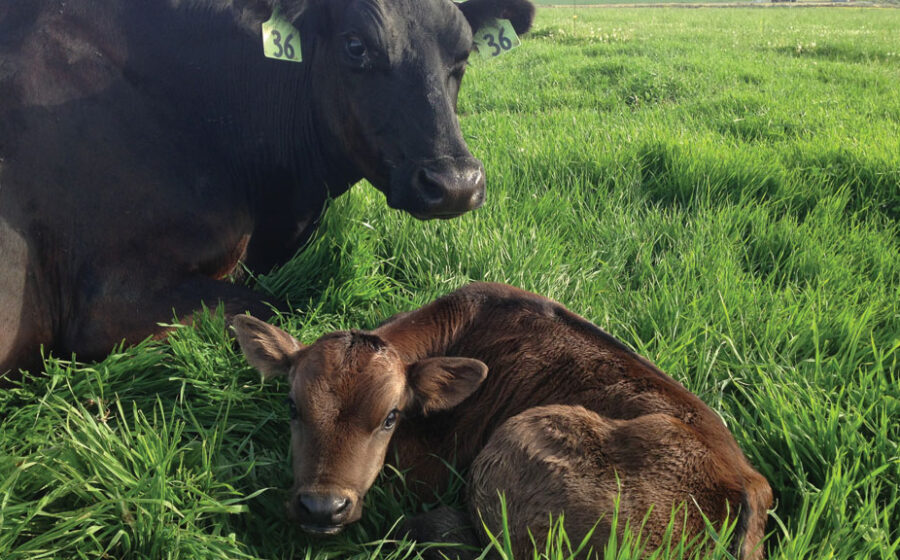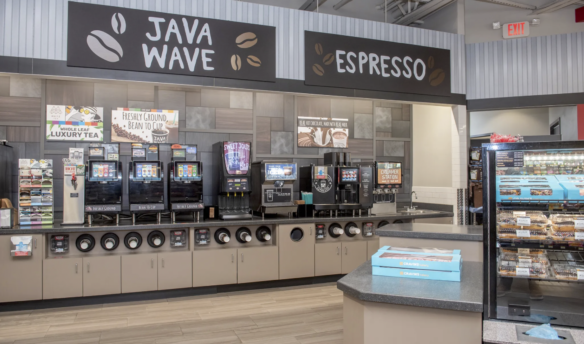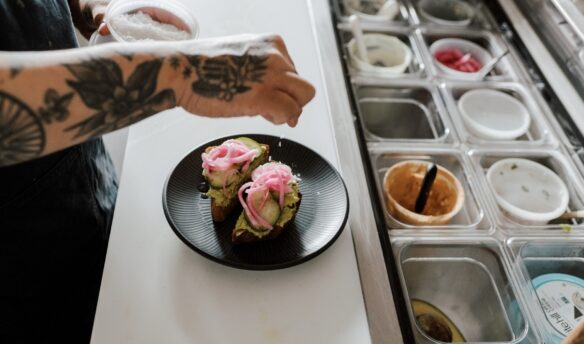[E]arlier this year, I stopped into Slate Coffee Roasters in Seattle’s Ballard neighborhood. Chelsey Walker-Watson, Slate’s director of retail, served me the bar’s popular deconstructed Espresso + Milk: a single espresso shot, a glass of steamed milk, and a macchiato. The presentation celebrates the unique attributes of each ingredient and the distinct flavors and texture resulting from their marriage.
I was blown away by each element on the tray. Not only was the espresso complex and flavorful, but the milk was unlike anything I’d ever tasted. Walker-Watson explained Slate’s partnership with Pure Eire Dairy in Othello, Washington, a dairy farm that partners with other coffee roasters in the Seattle area, even supplying competition milk in 2014 for US Barista Champion Laila Wilbur.
Jill and Richard Smith own and operate Pure Eire. They started the dairy with just seven Jersey cows, and now own more than 200 (still quite small by dairy standards). Pure Eire is the country’s first and only dairy to be certified 100 percent grass-fed, taking its commitment to animal welfare and high-quality milk products a step beyond organic.
Jill walked me through some of the basics of dairy farming, how they came to partner with the specialty coffee industry, and why their milk tastes so damn good.
This interview has been edited for clarity and space.
How did you get into dairy farming?
My husband grew up on a dairy and has always been in the dairy industry. We met when I was a livestock rep and called on him as a customer. Our first venture out on our own was starting a custom feeding heifer lot. Around 2005, we decided to build an organic dairy in Oregon. We could see there was a need for raw milk, so in 2009 we started a little dairy with just seven cows on my family’s farm ground in Othello.
What should people know about grass-fed dairy?
By design, that’s what cows are supposed to eat. We have a limit on growth because of our commitment to grass feeding. We have to ensure that we have enough farm ground to: (1) raise the feed for our animals, and (2) have enough pasture for them at all times. Organic rules say you have to pasture 120 days; we pasture every single day that we possibly can. We might pasture 250-plus days. Even if our cows are being fed in the barn or out on pasture, we’re giving them that grass that we put up all summer long so they never go without grass.
Pure Eire has all Jersey cows. Many people associate black-and-white cows with dairy. Why Jersey?
Black-and-white dairy cows have been bred to be large and produce a lot of milk; they’re more commonly used for producers making fluid milk. If you talk to anyone who makes cheese or is making any other product, they’re looking for Jersey milk because it’s naturally higher in butter fat content. With grass feeding on top of that, butter becomes a bright golden yellow. Our milk even has a golden color to it because of the Jersey and because they’re on grass.
I was truly blown away by the milk I tasted at Slate. what sets grass-fed milk apart?
We’re putting out to consumers what the cows give us. Milk on the shelf has been standardized to a 3.25 percent milk fat; we run easily 5.5–6 percent, sometimes a little more. Our milk is extra rich and creamy and that’s a good thing—all of the good things in the milk are in the fat; all of the nutrients, those grass-fed fats, you want as many of those as you can get. Our consumers really look for the full-fat products.
Something worth noting is that the milk they’re using at Slate is non-homogenized. That’s way more challenging for a barista and for a café because non-homogenized milk doesn’t have the uniformity many baristas are accustomed to. Slate shows a lot of skill in working with our milk because they have to deal with changes in butter fat, seasonality, and the flavor of the milk.
How did you come to start working with the specialty coffee industry?
Through the distributor we work with for western Washington. We distribute for the eastern part of the state, but rely on a distributor to help us with the western half. I want to say Chelsey was working with our distributor, getting some brand of milk from him already, then ours came along. It was 100 percent their idea to do a deconstructed presentation, which just blew me away. I had the opportunity to go over there and talk about the dairy and the milk, then last year we were lucky enough to have a group come over and tour the dairy and have a meal on the farm.
We connected with Laila while she was preparing for the USBC. It was fun to play with the milk when she competed. We had a crate of milk with different expiration dates; we opened every bottle and looked at the fat distribution and we tasted it. We decided one day was sweeter than the previous day. It was fun to explore the flavors of each bottle and determine which one would be best for competition.
What keeps café owners from putting more consideration into the milk they serve?
A lot of roasters work so hard to have a great product on their own, then they use the cheapest milk they can find. That can be 80 percent of somebody’s drink. When I’ve done tastings with the coffee industry [at SCAA and barista camps] the topic of expense commonly comes up. Good milk is a premium product, and that makes it difficult for some cafés to incorporate. And I understand that—it’s business.
What are some of the most common misconceptions you encounter?
A common one is that grass-fed and organic milk are the same thing. But we take it way past the organic standard. When customers buy organic milk, they envision these happy cows out on grass all the time. But organic just means they’re getting organic feed, whatever that feed might be. Taking a step further and being 100 percent grass fed is something we have to educate people about.
Another misconception is how animals are treated. Most dairy farmers are in it because they love the cows. We were following animal welfare–approved guidelines long before they came along. We believe in respecting the animal from birth to harvest and hope that life will be as long as it possibly can be. The industry has some things it can really improve on, but most dairy farmers aren’t out there using animals; they’re in it for the love or they wouldn’t do this.
There will always be a place for $1.99 milk at the convenience store, and there are going to be farmers that meet that need. I think if people look into their milk and where it’s coming from, they can find sources that align with their values.
—Ellie Bradley is Fresh Cup‘s editor.
















